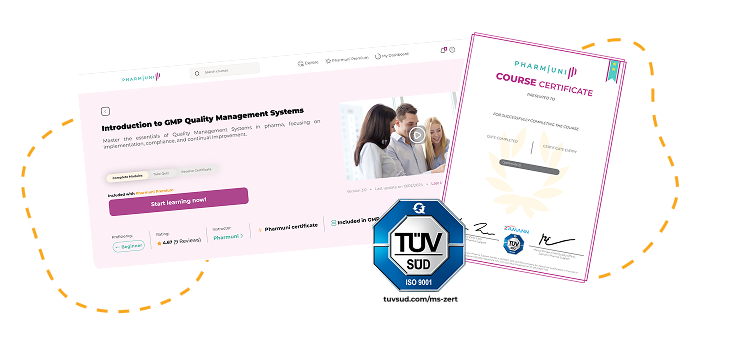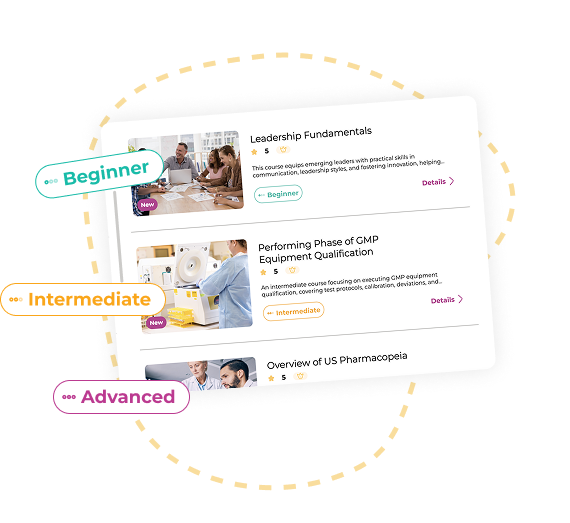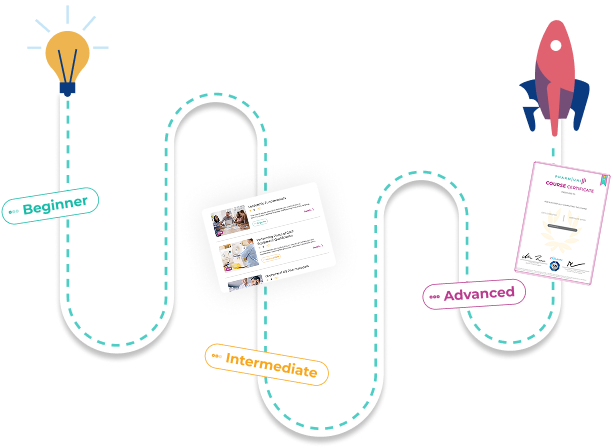Unlock the potential of your career in the Pharma industry with our online courses and qualifications.

Pick a career path, follow its guided course roadmap, and secure industry-verified credentials in a few months.

Earn career credentials from industry leaders that demonstrate your expertise.
Pass audits, cut deviations, and stay inspection-ready

Pharmuni’s CSV, calibration and IQ/OQ/PQ lessons help teams slash validation deviations and shorten audit-prep time—backed by GAMP 5 and FDA’s CSA risk-based guidance.

Why 60,000+ learners, universities and top pharma firms rely on Pharmuni
Every public Trustpilot review to date is 5-star.
60 000+ users in 152 countries have taken Pharmuni courses since launch.
Courses are built by Zamann Pharma Support, an audited QMS provider founded in 2017 in Lampertheim, Germany.
Hundreds of graduates share new Pharmuni certificates on LinkedIn every month, boosting their CV and visa applications.
Partner institutions include Hochschule Bremen, CAU Kiel and TH Bingen—display their logos for instant recognition.
Zamann’s ISO-audited auditors train Europe’s leading pharma manufacturers.
Validated processes keep drug potency and sterility consistent, directly protecting end-users.
21 CFR Part 11 demands “validation of systems to ensure accuracy, reliability, [and] consistent intended performance.”
Failures can cost up to $5 million per day, with single recalls topping $600 million.
Validation underpins electronic records that are attributable, legible, contemporaneous, original, and accurate.
Risk-based Computer Software Assurance (CSA) slashes validation effort by 40–50%, accelerating launches.
Regulatory fines, paperwork overload and tight budgets shouldn’t stall compliant production—or your career.
CSV/data-integrity gaps appear in 61% of FDA warning letters, and Form 483 totals keep climbing.
legacy processes consume ≈ 80% of engineers’ time and can add 50% to validation cycles.
on-site seminars cost about $5 k plus travel, while online programs cut out 20% of spend.
validation already claims 20%of a project’s budget, but digital tools trim timelines by 10%.
pharma faces a 35% talent deficit, and 63% of staff say they lack time for long classes.
teams need phone-ready, any-time access to lessons across sites and shifts.
Build expertise fast with Pharmuni’s library of 45+ pharma courses—start with Introduction to Computer Systems Validation and level up via Laboratory Method Validation and more. Every course carries a certificate under ISO 9001 of Zamann Pharma Support, includes quizzes, and streams on phone, tablet or desktop—learn whenever you have time.


Choose your track—GMP Basics, Quality Assurance Specialist, Pharmaceutical Project Manager, Production Planner, or Equipment Qualification Specialist. Each path bundles 4-7 expert-led courses and maps the exact skills employers seek, all unlocked by one subscription.
Pharmuni Premium turns learning into a career path with 50+ courses, AI tools, and career coaching to get you hired.
50 + expert-led pharma courses & quizzes
Industry-recognised certificates issued under an ISO-9001 quality system
Monthly VIP career coaching
AI-powered Skill Tree
Pharma-focused résumé & cover-letter builders
Mobile-friendly, 100 % self-paced platform



Pharmuni Premium gives you 50+ industry-aligned courses, credentials, VIP coaching, job tools trusted by professionals and more—for less than the cost of a single in-person training session.
Monthly: €39.99/mo
Annual: €33.25/mo (Save €80.88 yearly)
(most popular with immigrants)
We use cookies to improve your experience on our site. By using our site, you consent to cookies. Privacy Policy
Manage your cookie preferences below:
Essential cookies enable basic functions and are necessary for the proper function of the website.
These cookies are needed for adding comments on this website.
Google Tag Manager simplifies the management of marketing tags on your website without code changes.
These cookies are used for managing login functionality on this website.
Statistics cookies collect information anonymously. This information helps us understand how visitors use our website.
Google Analytics is a powerful tool that tracks and analyzes website traffic for informed marketing decisions.
Service URL: policies.google.com
Clarity is a web analytics service that tracks and reports website traffic.
Service URL: clarity.microsoft.com
Marketing cookies are used to follow visitors to websites. The intention is to show ads that are relevant and engaging to the individual user.
Facebook Pixel is a web analytics service that tracks and reports website traffic.
Service URL: www.facebook.com
LinkedIn Insight is a web analytics service that tracks and reports website traffic.
Service URL: www.linkedin.com
You can find more information in our Privacy Policy and Privacy Policy.